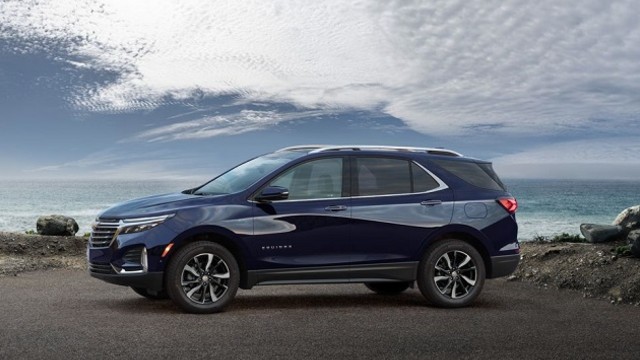
“So we placed the headlights lower in front without compromising design.” “With more high-riding SUVs on the road, we are hearing complaints about LED headlight glare,” says Rick Spina, executive chief engineer for crossover SUVs. There is a practical reason for the design, too. Unlike the polarizing 2013 Jeep Cherokee which separated running lamps, headlamps and foglights into three shelves, the Blazer’s low headlamp setup isn’t immediately apparent. That means the running lights are integrated into the upper grille where the headlights usually sit in models like the Equinox. The sporty RS and Premiere trims get GM’s twin-clutch, torque-vectoring, all-wheel drive system for better traction.Ĭhevy showed off the RS trim to The Detroit News at the GM Design Center in Warren, where it cut a striking figure in red with black trim and 21-inch black wheels.īreaking with Chevy tradition, the Blazer separates its LED running lights and headlamps – integrating the headlights with the fog lamps down low next to the grille. The new SUVs come equipped with a “Select Track” terrain-mode selector. That’s more power than all competitors but the 315-horse Ford Edge, though the Edge and Grand Cherokee also offer higher-horsepower performance variants including Jeep’s insane 707-horsepower Trackhawk.īoth Blazer engines are paired to Chevrolet’s nine-speed automatic transmission. A brawny 305-horsepower 3.6-liter V-6 also is available. The base engine is a 2.5-liter four-cylinder. The chassis has received solid reviews from enthusiast publications for its nimble handling, and the Blazer looks poised to take advantage.īreaking from Chevy tradition, the Blazer will not offer the usual L, LT and LS trims, but will debut as a base model simply named “Blazer” – then offer upscale RS and Premier trims. Rather than borrow the Colorado midsize pickup truck’s ladder frame, the Blazer shares its bones with the Cadillac XT5 and GMC Acadia on GM’s lightweight, unibody CY1 platform.

until 2005 (a truck-based SUV variant, the Trailblazer, is still sold in some international markets). The new Blazer is a long way from the pickup-based dirt-kicker that sold in the U.S. “This gave us an opportunity to design something with a lot of form and new, sleek proportions." “For the two-row midsize SUV segment, a top reason for purchase is exterior design,” says Blazer exterior design chief Mike Pevovar. More: Blazer name still carries weight with SUV fans The new Blazer wears the family’s familiar bow-tie and split grille up front, but then explores a bold design path with fashionable touches like low headlights, a “floating roof,” sporty interior cribbed from cousin Camaro, and a cargo management system. The mid-size Blazer slots between the compact two-row Equinox and family-sized three-row Traverse in Chevy’s full-line SUV offerings. More: UAW protests Mexico production of Blazer The Blazer has been reincarnated for 2019 – not as the rugged, truck-based box of yore, but as a fashionable two-row, car-like utility vehicle to take on the Ford Edge, Nissan Murano and Jeep Grand Cherokee. These battery-electric Vettes will not be built on General Motors’ Ultium flexible “skateboard” platform that is the basis for everything from the Cadillac Lyriq and Celestiq to the GMC Hummer and Chevrolet’s Silverado, Blazer, and Equinox EVs, but instead will be built on a premium architecture unique for Corvette, according to AutoForecast Solutions and a separate source wishing to remain anonymous.The Blazer is back, and this time it’s blazing a stylish, urban trail.Ĭhevy on Thursday introduced the return of the Blazer to its lineup 14 years after it disappeared from the brand’s portfolio. Latest intel on the impending Corvette sub-brand lineup of EVs says the four-door model comes to market in calendar 2026, followed by a crossover version in 2027.

This latest intelligence on timing for the long-rumored Corvette sub-brand conflicts with recent stories that the crossover EV could launch as early as next year as a 2025 model, which would be an ambitious timeframe.Power for the future EV Corvettes will come from the latest iteration of GM’s modular Ultium battery packs, although the structural platform will be unique to Corvette.


 0 kommentar(er)
0 kommentar(er)
